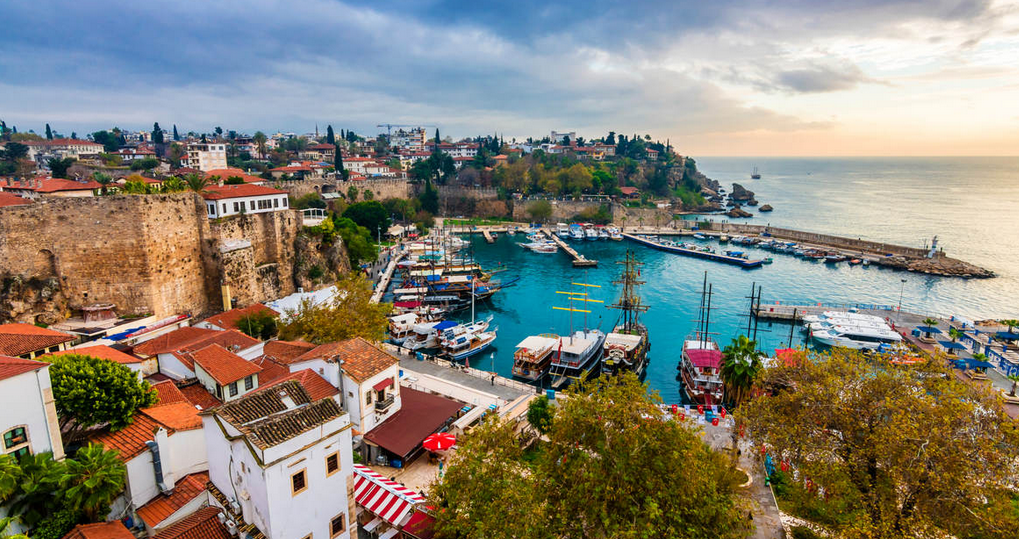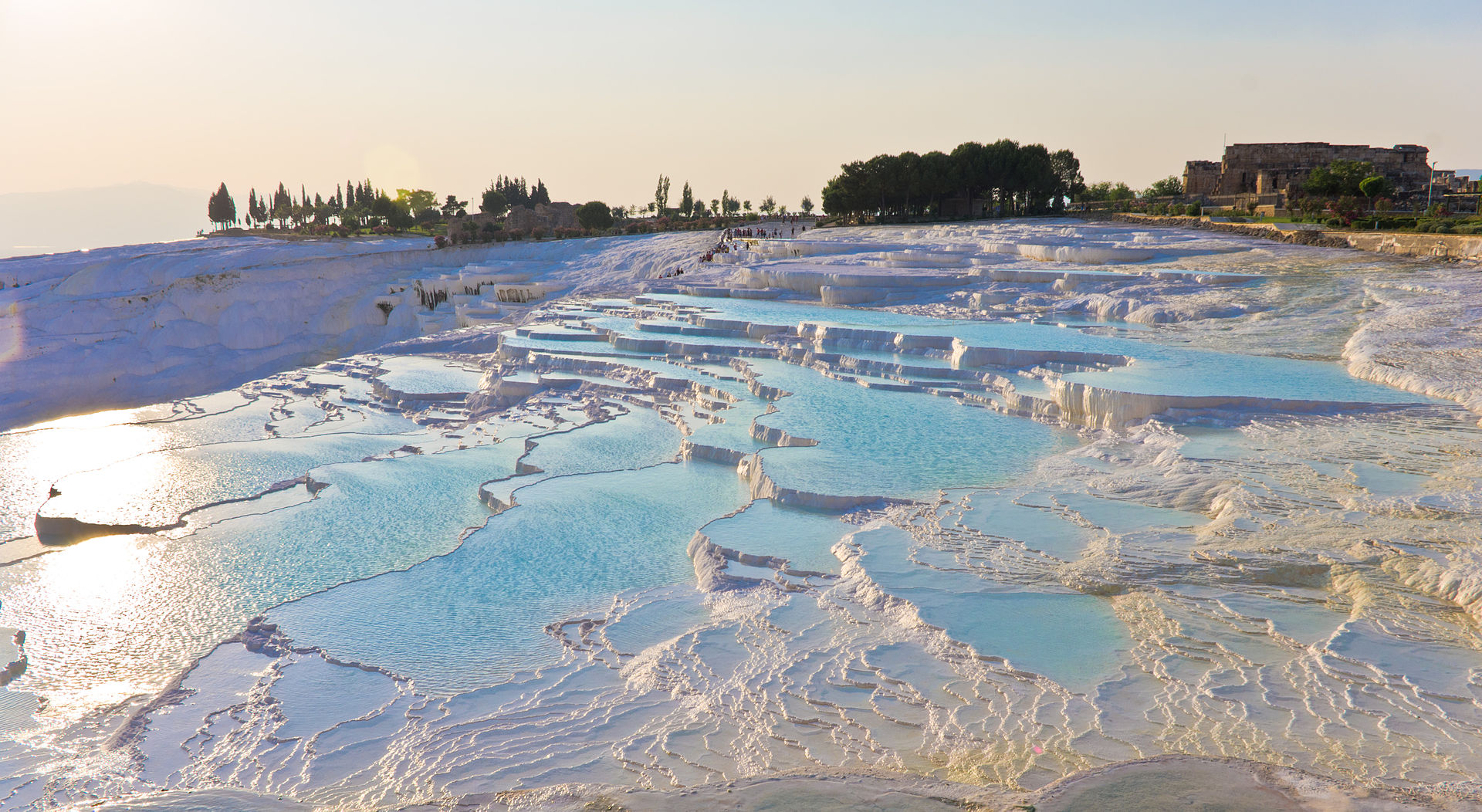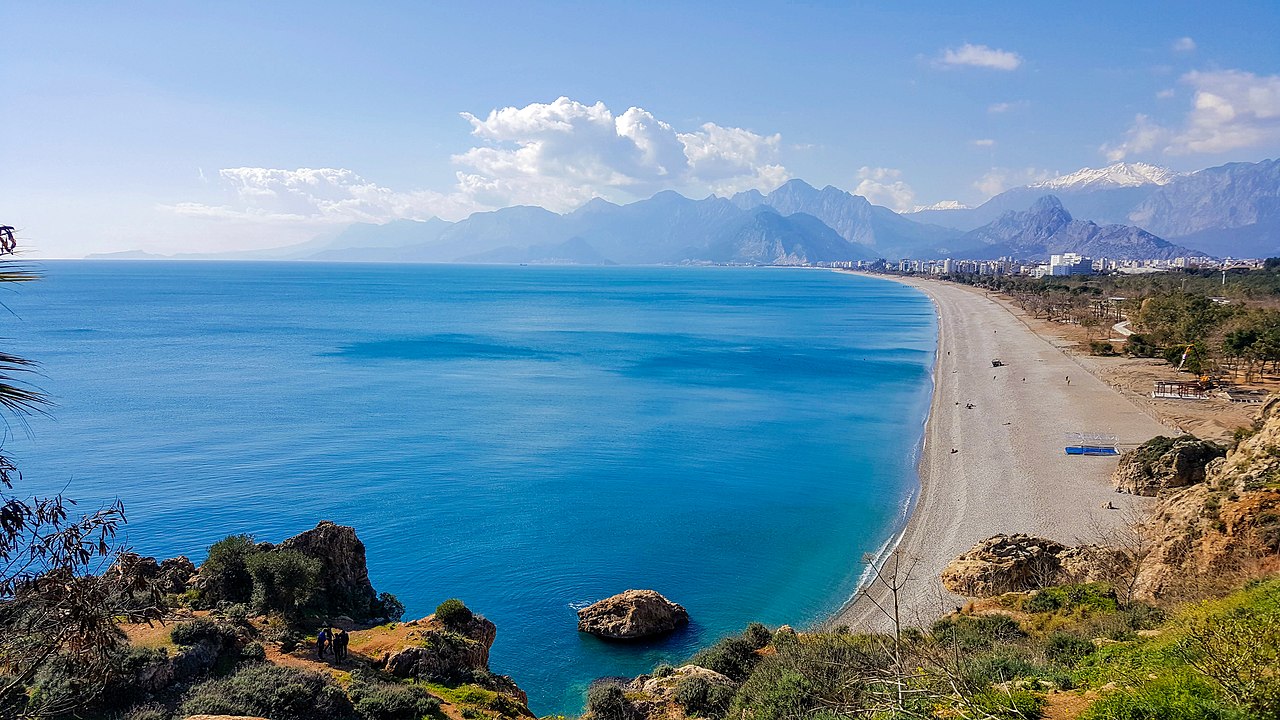
Pamukkale travertines and the ancient city Hierapolis are the top places to see at Pamukkale.
Hotels in Pamukkale | Cheap flights to Denizli for Pamukkale
Pamukkale travertines
Pamukkale travertine is a type of limestone deposited at the mouth of the spring.
The formation is Ca (HCO3)2 >> CaCO3 + CO2 + H2O,
To keep the travertine white and to prevent crush and damage on them, in 1997 it was forbidden to walk on them and the water is allowed to reach the terraces periodically according to weekly watering schedule. But it is possible to walk on the south part of the travertine with naked foot.
Hierapolis
 Hierapolis means Holy City, Sacred City because of its religious importance and also temples together with other religious buildings.
Hierapolis means Holy City, Sacred City because of its religious importance and also temples together with other religious buildings.
Hierapolis is a UNESCO World Heritage Site. The hot springs there have been used as a spa since the 2nd century BCE, and people came to soothe their ailments, with many of them retiring or dying here.
The great baths were constructed with huge stone blocks without the use of cement, and consisted of various closed or open sections linked together. There are deep niches in the inner section of the bath, library, gymnasium and other closed or open locations. The complex, which was constructed in the 2nd century BCE, constitutes a good example of vault type architecture. The complex is now an archaeological museum.
Hierapolis is also mentioned only once in the Bible, when St. Paul praises Epaphras, a Christian from Colossae, in his letter to the Colossians. Paul writes that Epaphras “has worked hard for you and for those in Laodicea and in Hierapolis” (Colossians 4:12-13). Epaphras was probably the founder of the Christian community at Hierapolis.
Hotels in Pamukkale | Cheap flights to Denizli for Pamukkale




